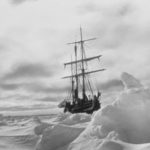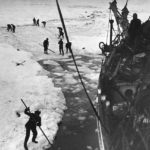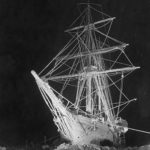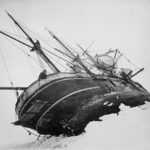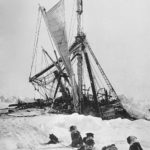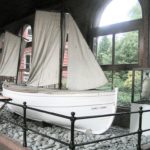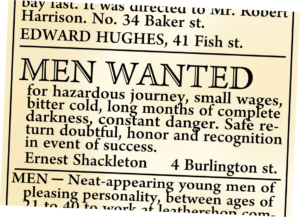THE SHACKLETON STORY
Succeeding Against All Odds
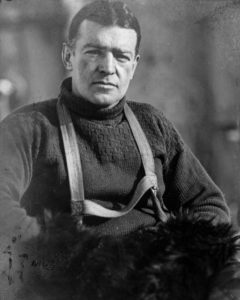
In 1914, Sir Ernest Shackleton set off aboard the ship Endurance on an expedition to be the first to cross Antarctica. This would be his third and last exploration of the Antarctic during the Heroic Age of Antarctic Exploration around the time of World War I. Born in 1874, Shackleton was a British Antarctic explorer who set many world records. He would foremost go down in history as one of the greatest leaders in such endeavors. One of his contemporaries said of him, “Scott for scientific method, Amundsen for speed and efficiency, but when disaster strikes and all hope is gone, get down on your knees and pray for Shackleton.”
After Amundsen succeeded in being the first man to reach the South Pole in 1911, Shackleton set out to be the first man to cross Antarctica from sea to sea. In recruitment for the expedition, Shackleton advertised in the newspaper, “Men wanted for hazardous journey. Small wages, bitter cold, long months of complete darkness, constant danger, safe return doubtful. Honour and recognition in case of success.” This turned out to be an understatement.
Tragedy struck early on when the expedition’s ship, the Endurance, was crushed between drifting ice flows and sank in the Weddell Sea before ever reaching Antarctica. This would become the start of a three-year saga whereby only through their determination and will power were they able to overcome some of the harshest and deadliest conditions on earth.
The "Endurance"
The ship Endurance was the three-masted barquentine that Sir Ernest Shackleton sailed for Antarctica in 1914 on the Imperial Trans-Antarctic Expedition. She was launched in 1912 from Sandefjord in Norway; three years later, she was crushed by the pack ice in the Weddell Sea off Antarctica, causing her to sink.
Click any Photo to Enlarge
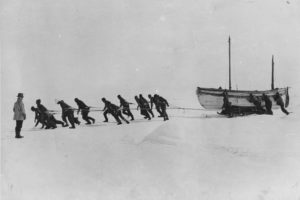
Sir Shackleton was determined to push forward into the unknown in order to return his men to safety. For nearly three years, he led his men overcoming many extreme hardships. Hazardous weather, mutiny and starvation were just a few of the challenges. The first several months were spent dragging their lifeboats and supplies across a labyrinth of pack ice towards the open sea. This proved exceedingly difficult. In one example, in three days they had managed only two miles.
In what is now considered one of the greatest nautical achievements in history, Shackleton and five of his men crammed into a 20-foot lifeboat and set sail on an 830-mile journey from Elephant Island to South Georgia Island for a whaling station where they could arrange rescue. To do this, they cunningly cannibalized parts from two of their three lifeboats in order reinforce the other, the James Caird. It took them 13 days at sea. They faced hurricane force winds, 60-foot rogue waves, and the hourly threat of capsizing due to ice constantly freezing on their rigging. They navigated with nothing more than a compass and sextant, which reading was often impossible due to storm clouds obscuring the stars and horizon. Against all odds they succeeded. On May 8, 1916, they finally reached South Georgia Island; however, due to terrible weather, they were forced to land ashore on the side of the island opposite the whaling station. This left them no choice but to attempt the 32-mile journey by foot up and over the island’s mountainous interior. Equipped with 50 feet of rope and wood screws pushed through their boots, they made the perilous trek in 36 hours. Despite several modern attempts, no groups has been able to achieve this same route.
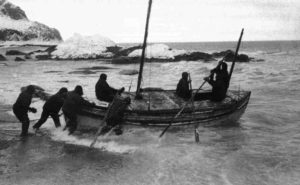
“Find a way or make one!” was their motto. Together they persevered. His men followed Shackleton through the hopeless situation and ultimately were rescued without a single fatality.
Remembering Shackleton’s raw determination and his team’s ultimate success in the face of overwhelming adversity inspires in us the same will and determination required to succeed in our investments.
The Brave Crew of the Shackleton Expedition
Shackleton received more than 5,000 applications to crew on the expedition. For his second-in-command, Shackleton chose Frank Wild, who had been with him on his two previous expeditions. To captain Endurance, Shackleton appointed Frank Worsley. The crew also included several British naval officers and six scientists. The photographic record of the expedition was the responsibility of photographer Frank Hurley.

